From Exile to Exploration: The Saga of Erik the Red
Erik the Red is one of the most interesting figures in Norse history. Epitomizing the Viking spirit of adventure and conquest, Erik is widely (and mistakenly) remembered as the first European to discover and colonize Greenland. His visit did, however, lay the foundation for Norse expansion into North America, by Erik’s son no less. But Erik was no traditional hero. He was a banished warrior, exiled from Iceland after being charged with murder and manslaughter (more than once). His story, told in multiple sagas, is one of leadership, resilience, and no small amount of redemption.
- 8 Ancient Voyages That Changed the World
- Norse Greenlanders Traveled to North America and Europe for Timber for Five Centuries
Erik the Red- From Exile to Pioneer
Erik the Red started life known as Erik Thorvaldsson. His later moniker is believed to have been down to either his red-colored hair or penchant for violence. According to multiple Icelandic sagas, he was born in 950 AD in Jaeren, part of Rogaland, Norway. While nothing is known about his mother we know his father, Thorvald Asvaldsson, was a man of some note.
This isn’t to say Thorvald was known for anything good. He’s mainly remembered because when Erik was around ten years old, he was banished from Norway after committing manslaughter. Thorvald chose to start afresh and take his family west from Norway and settle in Iceland.
This was a challenging undertaking. Iceland had already been thoroughly settled by this point, meaning the best land had already been taken. Adding to this, while Thorvald may have been someone back home, on this new frontier he was a nobody.
Eventually, Thorvald and his young son settled on Drangar, a bit of land in Hornstrandir, northwestern Iceland. It wasn’t ideal; the land was cold and hard and less than ideal for farming. Still, it was better than nothing and Thorvald and his son lived there until Thorvald died around 970 AD, when Erik was twenty years old.
- Years Before Columbus: Leif Erikson, His Life and His Voyage of Adventure to the New World
- Viking Colonies Collapsed Through Over Hunting Walruses
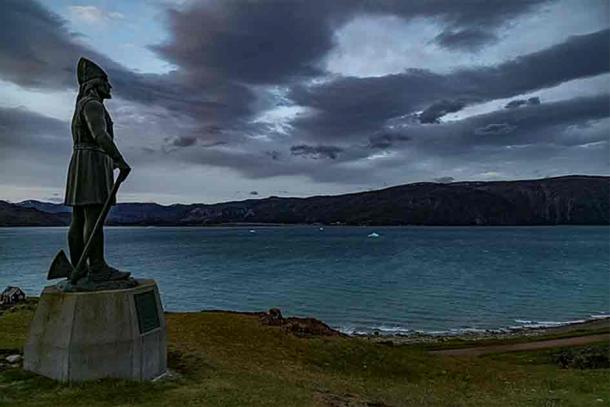
Statue of Erik the Red in Qassiarsuk, Greenland. (Rüdiger Wenzel/CC BY-SA 3.0 DE)
Marrying Into Wealth
Following his father’s death Erik decided it was about time he made something of himself. In the Norse world, one of the best (and safest) ways to do this was by marrying up, which is exactly what Erik did. Not long after his father died Erik met and married Thjodhild, the daughter of Jorundur Ulfsson and Thorbjorg Gilsdottir.
According to Medieval Icelandic tradition, Thjodhild’s family was rather rich and after the marriage Erik and his wife moved to Iceland’s more pleasant Breidafjordur region to be near her family. While living there Thjodhild's stepfather gave the couple a slice of his land and Erik built his own farm, Eiríksstaðir.
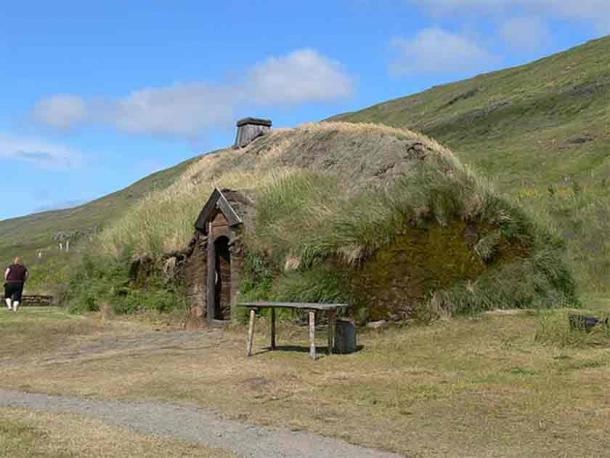
Reconstructed longhouse at Eiríksstaðir. It was the birthplace of his son Leif, the first known European discoverer of the Americas. (Wolfgang Sauber/CC BY-SA 3.0)
For a while life was good and the Saga of Erik the Red tells how Erik and his wife had four children- their daughter Freydis and three sons, explorer Leif Erikson, Thorvald, and Thorstein. Of these Leif Erikson is easily the most famous as he’s believed to have been one of, if not the first European to land in America, (take that Columbus).
Twice Exiled
Erik took after his father. Around 980 AD he found himself in trouble after falling out with one of his neighbors. The story goes that some of Erik’s thralls (aka slaves) accidentally caused a landslide on his neighbor’s land, damaging his farm. In retaliation the neighbor, Valthjof, and his friend, Eyjolf the Foul, took it upon themselves to kill Erik’s thralls.
This was a bad idea. Erik responded poorly to the murder of his property and escalated things by killing Eyjolf as well as another man who had got involved, Hrfan the Dueller. Their families were none too happy about all the bloodshed and looked for legal prosecution. Two years later, in 982 AD, Erik was found guilty of murder/ manslaughter and banished from Haukaladr.
This led to Erik moving once again, this time to Iceland’s Brokey and Öxney Island. Before leaving he asked one of his friends, Thorgest, to look after his family’s setstokkr. These were ornamental beams passed down through the generations that were believed to have mystical powers.
After completing his new home Erik briefly returned to retrieve his setstokkr. Unfortunately, his old friend had other ideas and refused to give them back. Erik then took matters into his own hands and traveled to Breidabolstadr to take the pillars back by force. Thorgest in turn rounded up some of his men and chased after Erik. In the fight that followed, Erik took out several of Thorgest’s sons as well as several others.
For a time, it looked like there would be more bloodshed as the former friends began to muster up large numbers of allies. In the end, a council was held called the Throsnes Thing. It was decided that Erik and his followers would be exiled for three years. Many of them would later follow Erik to Greenland.

Erik the Red from Arngrímur Jónsson's Grönlandia (Greenland). (Public Domain)
Setting Out for Greenland
Contrary to popular belief not all Nords were violent Vikings. The kind of people Erik had spent most of his life around were relatively peaceful farmer types who mostly wanted to live a quiet life. Most disputes were settled at the kind of “Thing” that had seen Erik exiled.
Having been exiled, again, Erik now found himself at a crossroads. His poor temper, penchant for getting into trouble, and two exiles meant it was unlikely he’d be welcomed anywhere in Nordic-held lands. Most exiles simply hid away for a while, waiting for their time to return but that wasn’t really Erik’s style. So, Erik decided to try and repair his damaged name by striking out and going on an adventure.
This is where many people confuse the historical record. It has been mistakenly repeated over the years that Erik was the first European to discover Greenland. He wasn’t. According to the Icelandic sagas, that honor should go to Gunnbjörn Ulfsson. Around one hundred years before Erik’s expedition he was blown off course and spotted Greenland but never landed there.
Eighty years after Gunnbjörn had gotten lost, an outlaw, Snæbjörn Galti, traveled to Greenland and attempted to settle it. Harsh conditions and in-fighting led to Snæbjörn’s murder and the colony’s rapid collapse. Since Gunnbjörn was lost, and Galti failed, their efforts have been largely forgotten, leading to the misnomer that Erik discovered Greenland.
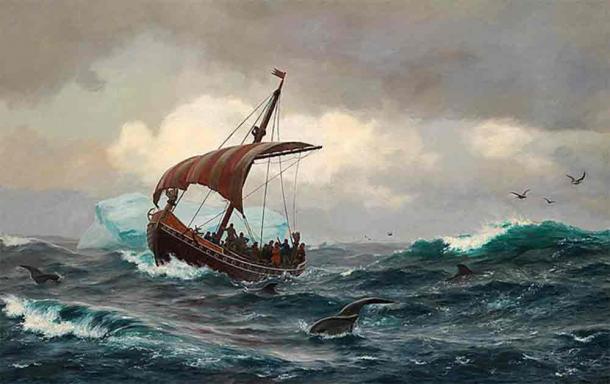
Gunnbjörn Ulfsson attempted to land in Greenland 100 years before Erik the Red’s expedition. Summer in the Greenland coast circa the year 1000 by Carl Rasmussen. (Public Domain)
Upon being banished Erik and his men sailed westwards looking for the mysterious land Snæbjörn Galti had tried to settle. Upon arriving they sailed around Greenland’s southern tip (Cape Farewell today) and up the western coast. Eventually, they found an area that wasn’t all ice and made camp at the mouth of a fjord which became known as Eriksfjord and then later known as Tunulliarfik Fjord.
The Saga of Erik the Red tells how Erik then spent the next three years exploring the massive landmass of Greenland. He spent the first winter on the island of Eiriksey, the second in Eiriksholmar, and spent his final summer exploring the north, in particular the areas known as Snaffles and Hafrsfjord.
From Pioneer to Colonizing Entrepreneur
Erik was no fool and as his time in exile grew to a close, he realized he could make a fortune out of his discovery. He returned to Iceland and told anyone who would listen tales of the bountiful land of “Greenland ''. He called it this knowing that "people would be attracted to go there if it had a favorable name". To make the potential settlement sound enticing he told the Icelanders how Greenland was full of animals for hunting and lush landscapes ready to be farmed. All of it uninhabited and ready for settling.
To be fair, Erik wasn’t exaggerating. There’s no historical evidence that during his three years exploring Greenland Erik ever bumped into any native people. While we know that Innuits had settled in Greenland at some point around 2500 BC, they had left again long before Erik and his crew turned up. The Thule people on the other hand (ancestors of modern Greenland’s Innuits) probably hadn’t arrived quite yet.
Furthermore, Erik had landed in Greenland during a time known as the medieval warm period (between 800 and 1200 AD). This was a time of warming during which average temperatures were a few degrees higher than normal. This means even considering modern global warming, much of Greenland would have been more hospitable than it is today.
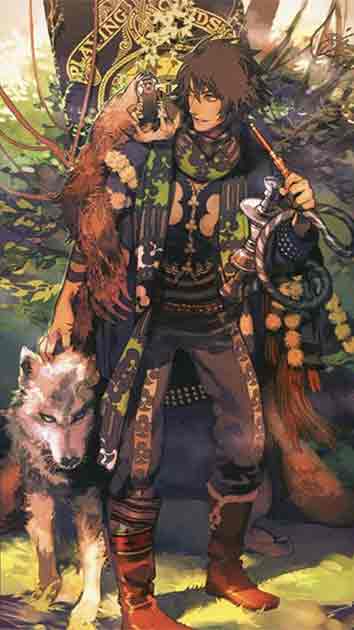
An image of Erik Thorvaldsson, also known as Erik the Red. (fandom/CC-BY-SA)
Settling Greenland
Erik spent the winter in Iceland spreading news of his discovery, hoping to attract as many potential settlers as possible. Enough were interested that by the summer of 985 AD, Erik had attracted 25 ships worth of people already to set sail and follow him.
Sadly, the initial journey didn’t exactly go to plan. The convoy hit heavy weather and out of the 25 ships, eleven sank. The fourteen remaining ships ferried roughly 350 people to Greenland. Erik and his family led the charge.
According to the 12th-century book, Íslendingabók, or Book of the Icelanders, the Icelandic settlers quickly found evidence of previous habitation. They put this down to Skraeling (indigenous people) but found no evidence anyone was still there. This meant the land was still up for grabs and Erik got to work dividing it up between settlers.
The settlers began to spread across the southwest coast. To the east, they built Eystribyggð (Eastern Settlement) and to the west, they built another settlement (the Western Settlement) in what is Nuuk today. Over time the two settlements expanded and a third, Middle Settlement, grew.
For a while life was relatively good and the three settlements’ combined population reached between 2,000 to 3,000 people. Erik may have oversold how green the land was (the settlers soon learned only the southwest coast could support farmland) but there was enough to go around. In the summer, the settlements sent armies of hunters to hunt Disko Bay, north of the Arctic Circle. They brought back with them riches like seals (which could be used for rope), walrus ivory, and beached whales.
These riches made the Greenlanders relatively prosperous. For his part, Erik built the estate of Brattahlíð, near present-day Narsarsuaq in Eystribyggð. He was known as the land’s “paramount chieftain” and became incredibly well-respected and wealthy. His bad temper also seemed to have finally calmed down.
During these peaceful initial years, Erik’s only problem seems to have been his family’s conversion to Christianity. Throughout this period Viking raids across Europe meant increasing numbers of people had been exposed to the religion and notable Norse leaders like Haakon the Good of Norway and Denmark's Harald Bluetooth had begun converting their people to Christianity.
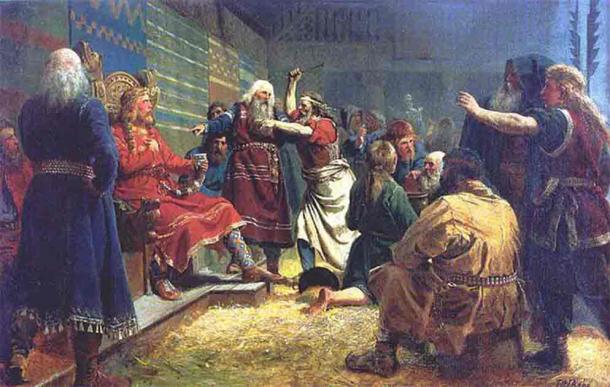
Painting of Haakon the Good of Norway 1860 by Peter Nicolai Arbo. (Public Domain)
It seems Erik’s son, Leif, converted after spending some time at the court of Norway’s king, Olaf. When Leif returned to Greenland he brought Christianity with him, converting his mother. She then built Greenland’s first church and soon others began popping up. The sagas say this caused a bit of a rift between Erik and his wife and she began withholding sexual favors from her heathen husband.
One Last Adventure
There are two main sagas that tell the story of Erik and the settling of Greenland, these are the Saga of Erik the Red and the Greenland Saga. While they share many similarities, they also contradict each other quite a bit. One of the main ways they do so is in their telling of how Vinland (thought to be near modern-day Canada) was discovered.
According to the Greenland Saga, Vinland was discovered by a Norse merchant, Thorfinn Karlsefni, while Erik’s people were settling in Greenland. Erik’s saga, on the other hand, tells how Leif discovered Vinland after hearing of a lost traveler who had sighted it (much like the story of Greenland).
In the most popular version of the story, after hearing of Vinland Leif asks his father to join him on an expedition. Having achieved everything he had wanted to in Greenland the aging Erik is said to have agreed. However, while riding to their boats Erik’s horse stumbled. The superstitious old man took this as an omen and decided he was too old to make the trip. Leif went without his father and, according to many, became one of the first Europeans to visit North America.
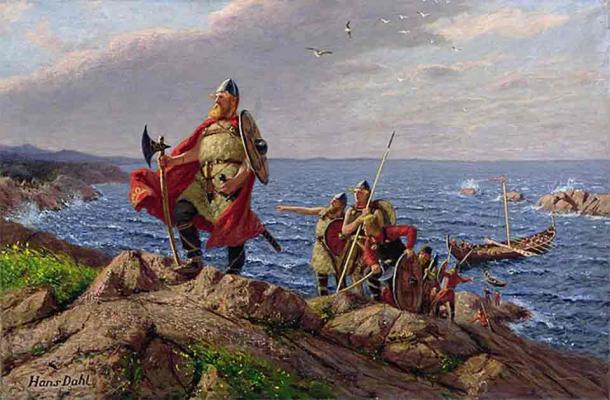
Erik’s son, Leif, landing in Vinland, modern-day Canada, by Hans Dahl (1849-1937) (Public Domain)
Erik’s Death and the Fall of Norse Greenland
In Leif’s absence, the colonies in Greenland continued to grow. Iceland was becoming increasingly overpopulated, and groups of immigrants left the country seeking a new life in Greenland. Soon the population had swelled to around 5000 settlers.
Sadly, this immigration boom spelled the beginning of the end. In 1002 AD a new group of immigrants brought an epidemic with them. This illness spread through the settlers at an alarming rate and killed many of their leaders, including Erik.
The colony as a whole survived but eventually collapsed. It's believed the Little Ice Age of the 15th century was partly to blame for this as it made farming difficult for the settlers. This led to many of them giving up and going home or dying off. Add to this pirate raids and attacks from the newly arrived Innuits and eventually Norway abandoned its support for the colony, leading to its total collapse.
Conclusion
Erik the Red embodies all of the positive aspects of the Viking ethos - bold, unyielding, and driven by the call of adventure. If the sagas are to be believed it is hugely impressive how in just a few short years he went from exiled thug to respected pioneer. It was quite a turnaround.
Through his leadership and exploration, he paved the way for future generations of Norse adventurers and colonizers, shaping the course of European expansion into new lands. With his fearless spirit, he not only left his mark on the map but also on the hearts and minds of all who hear his tale.
Top image: Representation of Erik the Red. Source: Gelpi/Adobe Stock
References
Crocker, S. 2023. HOW ERIK THE RED BECAME A LEGEND. Available at:
https://www.grunge.com/233407/how-erik-the-red-became-a-legend/
DeLong, W. 2023. Erik the Red, The Hot-Headed Viking Whose Murderous Temper Led to the Settlement of Greenland Available at: https://allthatsinteresting.com/erik-the-red
Editors. 2014. Erik the Red. Available at: https://www.biography.com/history-culture/erik-the-red
Wallace, B. 2023. Erik the Red. Available at: https://www.britannica.com/biography/Erik-the-Red
















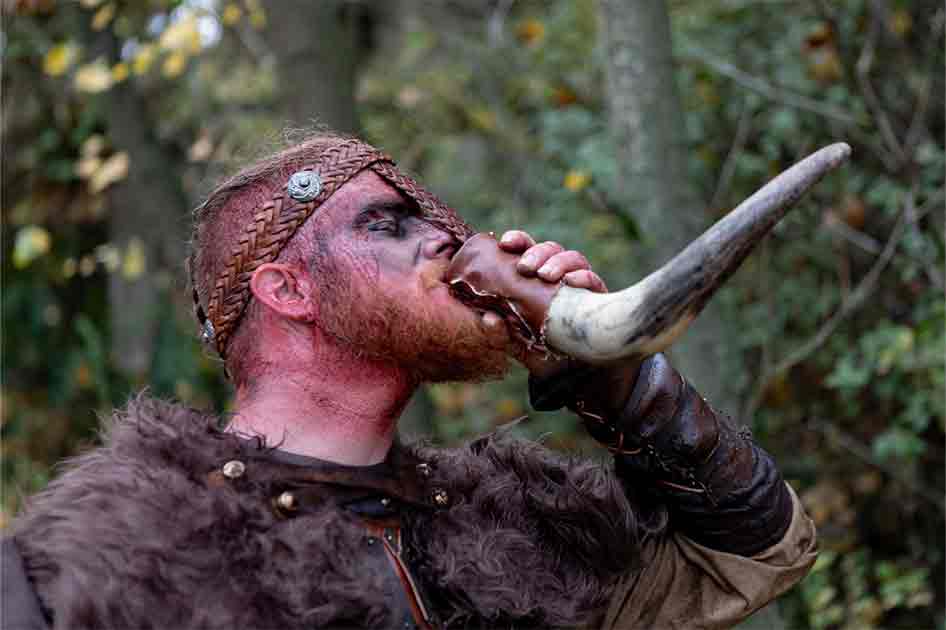

Comments
"This means even considering modern global warming, much of Greenland would have been more hospitable than it is today."
This is true, largely because anthropogenic global warming ls false. Obtaining data that shows modern warming is easy. One may claim old, warmer manual records are incorrect and needing to be expunged. One may shift a recording station to a warmer spot and pretend the data continuity is unquestionable. One may cherry pick stations, such as one that has had a motorway built next to it or experienced urban heat Island effects, again while pretending there is sound data continuity.
All of this makes a hot-headed Nordic Pagan look almost respectable, by contrast, a fairly impossible task. That's because the wholesale manipulation of weather records, such as occurs here in Australia, is not the action of one hothead in a fairly violent society but that, ultimately, of cold-blooded conspiracy by elites to defraud the masses of life and liberty, in the false name of unnecessary conservation.
Some of the blame for this must sit squarely on the many minions who make it possible, most without ever realising their part in a deception of monumental proportions, often while prone to lecturing those who know the truth.
However, as it is said, if one must lie, it pays to make it a big one. Greenland was, during the Medieval warm period, partly green. Large-scale climate change is real, but it is natural, and no amount of carbon-dioxide panic shall ever change that.
The history of the modern era, if written correctly at some future date, would be unrecognisable to most alive today. Indeed, it would shock them to the core, excepting for the simple fact that they would likely not believe any of it. People believe what they want to believe and if that includes thinking that Greenland never experienced a Medieval warming, thus it shall be. Mind control does that. Such is its purpose.
I thank the author for mentioning the Medieval warm period. Knowing it existed should be a precursor to questioning the veracity of the current climate science.